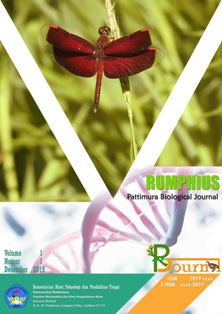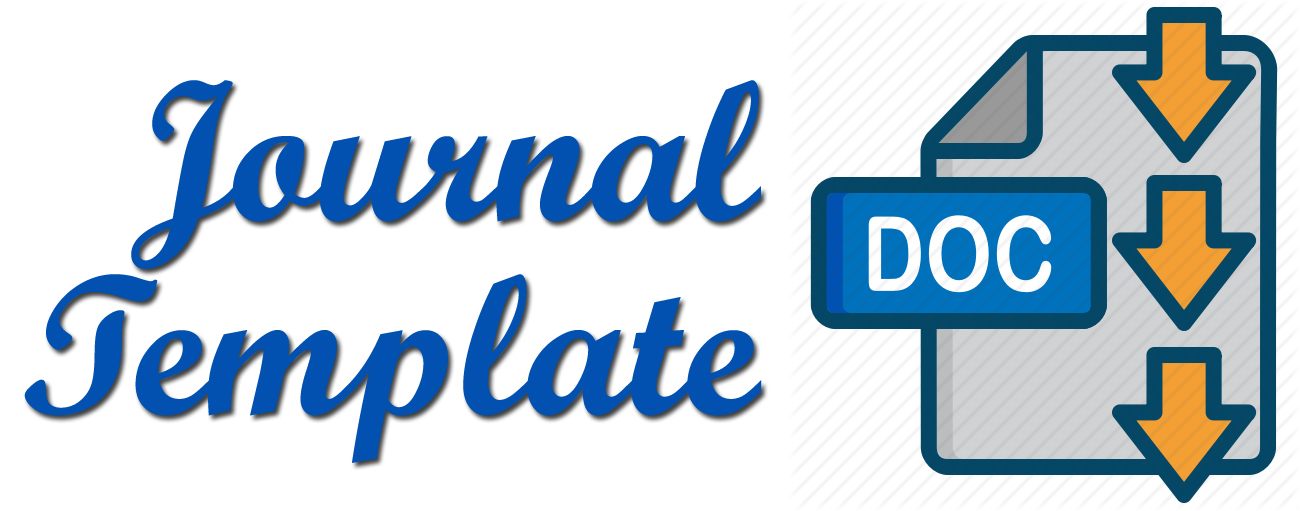ANTIBACTERIAL ACTIVITY AND INHIBITION OF BIOFILM OF Hibiscus tiliaceus STEM BARK METHANOL EXTRACT TO Streptococcus mutans GROWTH
Abstract
Dental caries is an infectious disease that occurs in the oral cavity preceded by the formation of dental plaque or biofilm. This study aims to examine the inhibition and biofilm inhibition of hibiscus tree bark extract (Hibiscus tiliaceus). The test methods used were Minimum Inhibitory Concentration (MIC) and Minimum Killing Concentration (MBC) while the analysis of biofilm inhibition used UV-VIS spectrophotometry at a wavelength of 580 nm with McFarlandII standard (6x108 CFU/ml). The results showed that the methanol extract of hibiscus bark at a small concentration of 0.5% could inhibit and kill Streptococcus mutans as indicated by the number of colonies that grew less with a value of 3.34 x 107 CFU/ml in colonies that grew at an extract concentration of 2. % and 1%. Biofilm inhibition is shown by the decreasing absorbance value due to the increased extract concentration so that less biofilm formation occurs.
Downloads
References
REFERENCES
Dewi Z.Y, Nur A dan Hertriani T. 2015. Efek antibakteri dan penghambatan biofilm ekstrak sereh (Cymbopogon nardus L.) terhadap bakteri Streptococcus mutans. Maj Ked Gi Ind 1(2): 136–141.
Dewi Z.Y, Nur A and Hertriani T. 2015. Antibacterial and biofilm inhibitory effects of lemongrass extract (Cymbopogon nardus L.) on Streptococcus mutans bacteria. Maj Ked Gi Eng 1(2): 136–141.
Darby M.L and Margaret M.W. 2010. Dental hygiene: theory and practice, 3rd ed. Elsevier, London.
Madigan M.T., Martinko J.M. and Brock T.D. 2014. Brock Biology of Microorganisms. 14th Ed. New Jersey: Pearson Prentice.
Eke P.I, Dye B.A, Wei L. Thornton-Evans G.O and Genco R.J. 2012. Prevalence of periodontitis in adults in the United States: 2009 and 2010. J Dent Res 91(10): 914─20.
Simon L. 2007. The Role of S. mutans and Oral Ecology in the Formation of Dental Caries. Lethbridge Undergraduate Research Jour 2(2):1─6.
Putri A.V.A.A, Hafida N and Megawati N. 2017. Effect of Antibacterial Power of Stevia Leaf Extract (Stevia rebaudiana Bertoni) at concentrations of 5%, 10%, 20%, 40% and 80% against Streptococcus mutans (in vitro). Journal of Dental Science 1(1):9─14.
Metwalli KH, Khan SA, Krom BP, Jabra-Rizk MA. 2013. Streptococcus mutans, Candida albicans, and The Human Mouth: A Sticky Situation. PLoS One Pathog 9(10):1─5.
Armitage JP. 2005. Understanding the Development and Formation of Biofilm. http://www. mathsinmedicine.org/uk/2005/biofilm accessed 8 January 2020.
Shu Xu J, Li Y, Cao X and Cui Lun. 2013. The Effect of Eugenol on the Cariogenic Properties of Streptococcus mutans and Dental Caries Development in Rats. Experimental and Therapeutic. Medicine 5(6):1667─1670.
Arinda A, Rahardjo P and Triwardani A. 2012 Differences in the effectiveness of mouthwash containing cloves and 0.2% chlorexidine gluconate mouthwash in inhibiting plaque formation. Orthodontic Dental Journal 1(1):22─25.
Diah K. 2012. Chemical plaque control in preventing gingivitis and periodontitis. Periodontic Journal. 1(02):1─6.
Raina L. 2011. Encyclopedia of medicinal plants. Jakarta: Salemba Medika: 13─19.
Dyah S, Depi P, Handian E.K. 2011. Effect of Tea Leaf Extract Toothpaste (Camelia sinensis L) on the Number of Streptococcus sp Colonies. On the Tooth Surface. Journal of Dentistry 8(1):44─50.
Nurhayati, Kuswiyanto, Karta P. 2017. The Effect of Clove Flower Extract (Syzygium aromaticum) on the Inhibition Zone of the Fungus Tricophyton rubrum. Equatorial Laboratory Journal 1(1):26─32.
Nyoman ICK, Gusti A.S.P, Gusti A.F.N.S. 2019. Testing the effectiveness of turmeric (Curcuma longa) extract on inhibiting the growth of Streptococcus mutans bacteria. Medical Science Digest 10(3):462─467.
Awal, S.M.A, Sonia N, Sonia N, Tauhidur R.N and Shaikh J.U. 2016. Evaluation of pharmacological activity of Hibiscus tiliaceus. SpringerPlus 5(1209): 2─6.
Mohanraj R. 2014. Plant based antibacterial agents. Resign 661(2):1─19.
Kumar S, Pandey AK. 2013. Chemistry and biological activities of flavonoids: an overview. Scientific World Journal (2013):1─16.
Lamothe RG, Mitchell G, Gattuso M, Diarra MS, Malouin F and Bouarab K, 2009. Plant Antimicrobial Agents and Their Effects on Plant and Human Pathogens. International Journal Science 10: 3400─3419.
Jamal R. 2010. Chemistry of Natural Products. Basic Principles of Isolation and Identification. Baiturrahmah University Publishers. Padang.
Khunaifi, M., 2010. Antibacterial Activity Test of Binahong Leaf Extract (Anredera cordifolia (Ten.) Steenis) against Staphylococcus aureus and Pseudomonas aeruginosa bacteria. Thesis. Maulana Malik Ibrahim State Islamic University. Faculty of Science and Technology, Malang
Authors who propose a manuscript and have it approved for publication know that the manuscript will be registered and become part of the RPBJ. Authors and readers understand that this journal is open and all its contents can be accessed freely, provided that RPBJ is still listed as the source of information. The hope is that this journal can become a vehicle for exchange and scientific knowledge for society and the scientific community, especially in the field of Biology and other branches of science.









